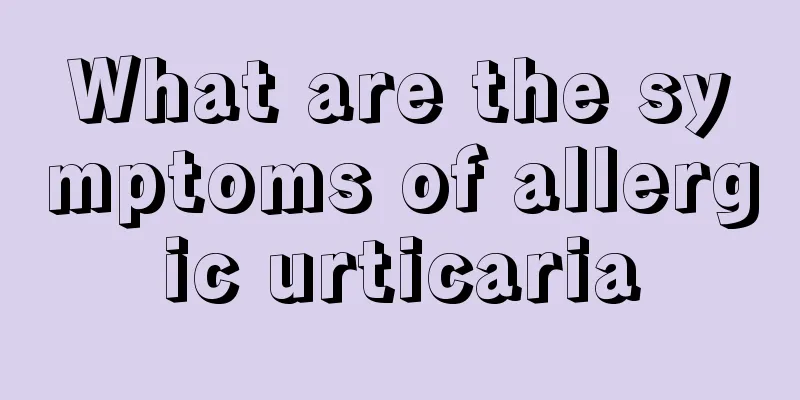Sequelae of chlorine poisoning

|
The problem of chlorine poisoning is very serious. After poisoning, the patient will feel difficulty breathing and chest tightness. If the condition is more serious, the patient may faint on the spot. Therefore, you must go to the hospital immediately to receive relevant treatment. If the treatment time is delayed, it will lead to sequelae, causing the patient's lungs to inhale too much toxic gas and show some lung symptoms. 1. Mild poisoning The main symptoms are bronchitis or peribronchitis, with cough, small amount of sputum, chest tightness, etc. There are scattered dry rales or wheezes in both lungs, and there may be a small amount of wet rales. Lung X-ray shows increased and thickened lung texture with unclear edges, which are generally more obvious in the lower lung fields. After rest and treatment, the symptoms may disappear within 1 to 2 days. 2. Moderate poisoning The main manifestations are bronchopneumonia, interstitial pulmonary edema or localized alveolar pulmonary edema. Symptoms of eye and upper respiratory tract irritation worsen, with chest tightness, difficulty breathing, paroxysmal choking cough, sputum, sometimes pink foamy sputum or sputum with blood, accompanied by gastrointestinal reactions such as headache, fatigue, nausea, loss of appetite, abdominal pain, and bloating. Mild cyanosis, dry or wet rales in both lungs, or diffuse wheezing in both lungs. The above symptoms will gradually alleviate and disappear after 2 to 10 days of rest and treatment. 3. Severe poisoning If any of the following conditions is found in clinical manifestations or chest X-ray findings, it is considered severe poisoning. 1) Clinical manifestations: ① Pulmonary edema occurs after inhalation of high concentrations of chlorine for several minutes to several hours, with coughing up large amounts of white or pink foamy sputum, difficulty breathing, chest tightness, obvious cyanosis, and diffuse moist rales in both lungs; ② Severe asphyxia caused by laryngeal and bronchial spasm or edema; ③ Shock and moderate to deep coma; 4 Sudden death caused by reflex respiratory center inhibition or cardiac arrest; ⑤ Severe complications such as pneumothorax and mediastinal emphysema. 2) Chest X-ray manifestations: mainly extensive, diffuse pneumonia or alveolar pulmonary edema. There are large flakes of uniformly increased density shadows, or flake shadows of varying sizes and densities with blurred edges, which are widely distributed in both lung fields, and a small number are in the shape of butterfly wings. Bronchial asthma or asthmatic bronchitis may occur after severe chlorine poisoning. The latter is caused by the formation of organized scars due to hydrochloric acid corrosion, which is difficult to recover and can develop into emphysema. Acute chlorine poisoning can be diagnosed based on the rapid onset of disease after inhaling a large amount of chlorine gas in a short period of time, combined with a comprehensive analysis of symptoms, signs, and chest X-ray findings, and excluding respiratory diseases caused by other reasons. |
<<: The drug of choice for nephrotic syndrome
>>: The sequelae of laser eye drilling
Recommend
What is the method to adjust the acid-alkalinity to give birth to a boy?
With the development of society, young couples no...
Will kidney cancer metastasize after one kidney is removed?
Renal cancer patients may still experience metast...
What should be done for hepatitis B testing?
Hepatitis B testing generally requires hepatitis ...
A brief analysis of the treatment methods of melanoma: surgical treatment
Surgery for melanoma is one of the most common me...
Should thyroid cancer be treated with surgery?
Whether thyroid cancer requires surgery depends m...
What are the consequences of suddenly stopping prednisone?
Prednisone has good anti-inflammatory and anti-al...
Can dimples be created
"Dimples and long eyelashes are your most be...
Causes and treatments of salty mouth
Some people have symptoms such as salty mouth. Th...
How long after wisdom teeth extraction can I take a shower
Wisdom teeth not only bring pain, but also affect...
How to dry thick nail polish quickly
Dyeing your nails in other colors is a fashionabl...
Bronchoscopy biopsy pathology results
Bronchoscopy biopsy is a common examination metho...
The efficacy and function of sea buckthorn oil
As a raw material for health food, sea buckthorn ...
Is lymphoma contagious?
Is lymphoma contagious? Lymphoma, also known as &...
What are the nursing methods for lymphoma
In recent years, the incidence of lymphoma has be...
What are the nursing issues before pituitary tumor surgery
Surgery is currently an effective method for trea...









